The Ultimate Guide to Preparing Your Home for Sale: Maximize Value and Buyer Appeal
Introduction: Preparing Your Home for a Successful Sale
Selling a home is often one of the most significant financial transactions in a person’s life, a pivotal moment with both emotional and financial implications. The primary objective, of course, is to secure the highest possible sale price within a reasonable timeframe. However, in today’s dynamic real estate market, simply listing your property and hoping for the best is rarely a successful strategy. A proactive and strategic approach, incorporating key elements of real estate preparation, targeted home improvements, and effective sales and marketing, is essential for maximizing your return on investment.
This comprehensive guide provides a roadmap to navigate the complexities of preparing your home for sale, ensuring you attract the right buyers and achieve your selling goals. The current market demands a well-prepared property that stands out from the competition. Buyers are increasingly savvy and discerning, often conducting extensive online research before even stepping inside a home. High-quality visuals, compelling property descriptions, and a clear understanding of your target audience are crucial components of a successful sales and marketing strategy.
Think of your property as a product you’re bringing to market – presentation is everything. Staging, decluttering, and depersonalizing are key steps in this process, allowing potential buyers to envision themselves living in the space. According to the National Association of Realtors, staged homes sell, on average, 17% faster and for 10% more than non-staged homes, demonstrating the power of effective presentation in real estate sales. Beyond aesthetics, strategic home improvements can significantly increase your property’s value and appeal.
Focusing on areas with the highest return on investment, such as kitchen and bathroom upgrades, can make your property more competitive. Even minor updates, like replacing outdated fixtures or adding a fresh coat of paint, can create a significant impact. From a sales and marketing perspective, highlighting these improvements in your listing and during showings is crucial. For instance, emphasizing energy-efficient upgrades, like new windows or smart thermostats, can resonate with environmentally conscious buyers, a growing segment of the market.
Understanding what buyers are looking for and showcasing those features effectively is a key aspect of successful home sales. Pricing your home accurately is another critical element of the sales process. Overpricing can lead to stagnation on the market, while underpricing can leave money on the table. A thorough comparative market analysis, considering recent sales of similar properties in your area, is essential for determining the optimal listing price. Consulting with an experienced real estate agent can provide valuable insights into local market trends and pricing strategies, ensuring your property is competitively positioned to attract the right buyers. By integrating these real estate, home improvement, and sales and marketing principles, you can transform your home into a highly desirable asset, maximizing its value and achieving a successful sale.
Pre-listing Preparations: Declutter, Clean, and Depersonalize
Creating a positive first impression is paramount when selling a house, and the initial steps you take play a crucial role in achieving this. This pre-listing phase centers around decluttering, neutralizing the space, and ensuring the property is impeccably clean, effectively setting the stage for a successful sale. Begin by systematically decluttering each room, removing excess furniture, personal belongings, and anything that contributes to a cramped or cluttered feel. Think of it as creating a blank canvas that allows potential buyers to envision their own lives within the space, free from the distractions of the current owner’s belongings.
Renting a storage unit can be a worthwhile investment to temporarily house these items, maximizing the perceived space within your home. This process is a key element of home staging, which aims to present the property in its most appealing light. Depersonalizing the home is equally crucial. Removing family photos, personal collections, and any items that strongly reflect individual tastes allows potential buyers to focus on the property’s features rather than the current owner’s lifestyle.
This neutrality helps buyers project their own vision onto the home, fostering a stronger emotional connection and increasing the likelihood of an offer. According to a survey conducted by the National Association of Realtors, staged homes sell, on average, 73% faster than non-staged homes, demonstrating the tangible impact of these efforts. This underscores the importance of creating a space that feels welcoming and universally appealing. A thorough deep clean is non-negotiable. Pay close attention to often-overlooked areas such as baseboards, windows, and grout.
Sparkling clean surfaces not only enhance the visual appeal but also convey a sense of care and maintenance, suggesting to buyers that the property has been well-maintained. Addressing minor repairs, such as leaky faucets, loose doorknobs, or chipped paint, further reinforces this impression. These seemingly small details can significantly impact a buyer’s perception of the home’s overall condition and value. In the competitive real estate market, addressing these details can be the difference between a quick sale and a prolonged listing period.
Curb appeal is the first impression buyers have of your property, so it’s essential to make it count. A well-maintained exterior sets a positive tone for the entire showing. Ensure the lawn is manicured, the landscaping is neat, and the exterior is clean and inviting. Consider adding a fresh coat of paint to the front door or trim for an updated and welcoming look. These exterior improvements not only enhance the aesthetic appeal but also suggest to potential buyers that the home has been well-cared for, potentially increasing home value.
Investing in landscaping can yield a significant return on investment, as a well-maintained yard can add up to 20% to a home’s value, according to industry experts. These initial preparations, while seemingly simple, are fundamental to maximizing your home’s appeal and setting the stage for a successful sale. By focusing on these key areas, you can create a welcoming and attractive environment that resonates with potential buyers and helps you achieve your selling goals. Finally, consider the sensory experience of potential buyers.
A pleasant, subtle scent can create a welcoming atmosphere. Avoid overpowering air fresheners, opting instead for natural scents like vanilla or citrus. Soft background music can also contribute to a positive ambiance. These subtle touches can enhance the emotional connection buyers feel with the space, further increasing its appeal and contributing to a positive overall impression. Preparing for a home sale involves not only addressing the visual aspects but also creating a sensory experience that resonates with potential buyers, ultimately contributing to a successful and timely sale.
Staging and Styling: Enhancing Visual Appeal
Staging, a crucial element in real estate sales and marketing, transforms houses into marketable products by highlighting their potential and appealing to a broad buyer base. It’s more than just arranging furniture; it’s about creating an aspirational lifestyle that resonates with potential buyers, ultimately increasing home value. Start by decluttering and depersonalizing, removing excess furniture and personal items to create a sense of spaciousness and allow buyers to envision themselves in the space. This foundational step, a key aspect of home improvement, sets the stage for a successful sale.
Neutralizing the space with a fresh coat of paint in soft, inviting tones creates a blank canvas that appeals to a wider range of tastes. Consider repainting walls in shades of white or light gray, which allows natural light to enhance the perception of size and airiness. Arranging furniture strategically to maximize flow and functionality is paramount. Create clear pathways and define distinct living areas within each room. For example, in the living room, arrange furniture to create a conversational setting, highlighting the fireplace as a focal point.
In the dining room, ensure ample space for movement around the table and chairs. This attention to detail elevates the perceived value and enhances the overall presentation of the home, crucial for effective real estate marketing. Lighting plays a critical role in setting the mood and ambiance of a space. Maximize natural light by opening curtains and blinds, and strategically place mirrors to reflect light and create an illusion of spaciousness. Incorporate a mix of ambient, task, and accent lighting to create a warm and inviting atmosphere, especially during showings.
This relatively simple home improvement can significantly impact a potential buyer’s perception. Accessorizing thoughtfully adds the finishing touches that transform a house into a home. Introduce pops of color and texture with carefully chosen cushions, throws, and area rugs. Fresh flowers, strategically placed artwork, and decorative bowls add visual interest and create a sense of warmth and elegance. However, avoid overly personal items or excessive decorations that can distract potential buyers. The objective is to create a cohesive and inviting space that allows buyers to imagine themselves living there.
For sellers preparing for a home sale, investing in the services of a professional home stager can be a valuable investment. Stagers possess the expertise to create a visually compelling narrative that appeals to the target market, often resulting in a quicker sale and a higher selling price. They understand current market trends and buyer preferences, and can make recommendations for cost-effective updates and improvements that maximize return on investment. Staging is not about creating a flawless, impersonal model home; it’s about showcasing the property’s best features, creating an emotional connection with potential buyers, and ultimately facilitating a successful sale in the competitive real estate market.
Targeted Improvements for Maximum ROI: Smart Upgrades
While extensive renovations may not always be financially viable, strategically targeted upgrades can significantly increase your home’s value and attract a broader pool of potential buyers. Focusing on cost-effective renovations that yield the highest return on investment (ROI) is key to maximizing your profit when selling a house. Areas like the kitchen and bathrooms are consistently ranked as top priorities for buyers, making them prime candidates for improvement. In the kitchen, even minor updates can make a substantial difference.
Consider repainting or refinishing existing cabinets for a fresh, modern look without the expense of full replacements. Updating countertops with contemporary materials like quartz or granite can instantly elevate the perceived value of the space. Replacing outdated fixtures, such as faucets, lighting, and hardware, is another cost-effective way to enhance the kitchen’s aesthetic appeal and functionality. These improvements directly address what buyers seek in a modern kitchen, increasing your home’s marketability. Bathrooms offer similar opportunities for impactful upgrades.
Replacing worn or outdated faucets, showerheads, and lighting fixtures can create a spa-like atmosphere, adding a touch of luxury that resonates with buyers. If your budget allows, consider upgrading to a more modern vanity or re-grouting tiled surfaces for a cleaner, more contemporary feel. These targeted improvements can significantly enhance the perceived value of your bathrooms without requiring a complete overhaul. Beyond kitchens and bathrooms, energy-efficient upgrades are increasingly sought after by environmentally conscious buyers and can significantly reduce utility costs, adding to the home’s appeal.
Installing a programmable thermostat, upgrading to LED lighting, and sealing windows and doors are cost-effective improvements that demonstrate a commitment to sustainability. Highlighting these features in your marketing materials can attract buyers looking to minimize their environmental footprint and long-term expenses. This resonates strongly with the current market trends and positions your property as a modern, efficient, and desirable home. When preparing for a home sale, prioritize repairs that address potential red flags for buyers.
Structural issues, plumbing problems, and electrical issues should be rectified before listing your home to avoid deterring potential buyers. These issues can significantly impact a buyer’s perception of the property and can lead to price negotiations or even deal cancellations. Addressing them proactively demonstrates transparency and builds trust with potential buyers. Cosmetic enhancements, such as a fresh coat of paint, updated hardware, and landscaping improvements, play a crucial role in enhancing curb appeal and creating a positive first impression.
Staging the home effectively, by decluttering, depersonalizing, and arranging furniture thoughtfully, creates an inviting atmosphere that allows potential buyers to envision themselves living in the space. These seemingly minor details can significantly impact a buyer’s emotional connection to the property and ultimately influence their decision to make an offer. By focusing on cost-effective upgrades, addressing necessary repairs, and presenting a well-maintained property, you can maximize your home’s value, attract more buyers, and streamline the sales process. Remember, preparing for home sale is an investment in achieving the best possible outcome in today’s competitive real estate market.
Highlighting Key Selling Points: Showcasing Desirable Features
Highlighting your home’s unique selling points is crucial for attracting the right buyers and maximizing its value in the competitive real estate market. This involves strategically showcasing the features that resonate most with today’s buyers, transforming a simple showing into a compelling narrative of comfortable and convenient living. If your home boasts energy-efficient features, such as solar panels, updated windows, or high-efficiency HVAC systems, ensure these are prominently featured in your listing and marketing materials.
Quantify the savings potential whenever possible. For example, stating that energy-efficient windows can reduce annual utility costs by 15% provides a tangible benefit for potential buyers. Smart home technology, including automated lighting, advanced security systems, and smart thermostats, is another highly sought-after feature. These upgrades not only add convenience but also contribute to a modern, tech-savvy image, appealing to a growing segment of buyers. Emphasize the seamless integration and user-friendliness of these systems, showcasing how they enhance daily living.
Outdoor living spaces have become increasingly important for buyers, especially in recent years. Patios, decks, meticulously landscaped gardens, and outdoor kitchens are prime selling points that extend living space and offer opportunities for relaxation and entertainment. Ensure these areas are clean, well-maintained, and staged to showcase their full potential. Consider adding outdoor furniture, ambient lighting, and vibrant plants to create an inviting atmosphere. Staging these spaces allows buyers to envision themselves enjoying these areas, adding significant value to your property.
When selling a house, remember that location is paramount. Highlighting proximity to desirable amenities, such as top-rated schools, parks, shopping centers, and restaurants, can significantly increase your home’s appeal. Research local market trends and emphasize the features that resonate most with buyers in your area. If your neighborhood is known for its walkability or access to public transportation, be sure to highlight these advantages. Providing specific examples, such as the distance to the nearest park or the average commute time, adds credibility and strengthens your listing.
Finally, don’t overlook the value of pre-listing home staging. A professional stager can help you optimize furniture placement, décor, and overall presentation to create a welcoming and aspirational environment. Staging helps depersonalize the space, allowing potential buyers to envision themselves living in the home. According to the National Association of Realtors, staged homes sell faster and for more money than non-staged homes, making it a worthwhile investment when preparing for a home sale. By strategically showcasing your home’s most desirable features, you can effectively target the right buyers, increase home value, and achieve a successful sale.
Pre-listing Inspection: Identifying and Addressing Issues
A pre-listing home inspection is a powerful tool for sellers aiming to maximize their return and streamline the sales process. By proactively identifying and addressing potential issues before the property hits the market, sellers gain a significant advantage in today’s competitive real estate landscape. This preemptive approach not only mitigates potential surprises during the buyer’s inspection but also fosters trust and transparency, key elements in securing a smooth and successful transaction. While the cost of a pre-listing inspection might seem like an added expense, it can ultimately save sellers both time and money by preventing costly renegotiations or even deal cancellations down the line.
Think of it as an investment in selling your house efficiently and for the best possible price. Investing in a pre-listing inspection allows sellers to address necessary home improvements strategically. For instance, if the inspection reveals a faulty HVAC system, the seller can choose to repair or replace it before listing, eliminating a potential point of contention during negotiations. This proactive approach strengthens the seller’s position, allowing them to confidently price the property and avoid last-minute price reductions.
Moreover, a clean inspection report can significantly expedite the closing process. Buyers are more likely to move forward quickly and confidently when presented with a property that has already been vetted by a professional. This translates to a faster sale and a reduced risk of the deal falling through due to unforeseen repair needs. In essence, a pre-listing inspection helps prepare for home sale more effectively. From a sales and marketing perspective, a pre-listing inspection can be a valuable asset.
It provides tangible evidence of the property’s condition, bolstering the seller’s claims and building buyer confidence. In a market where buyers are increasingly discerning, this transparency can be a major selling point. Highlighting a recent, clean inspection report in marketing materials can attract serious buyers and set the property apart from the competition. Furthermore, addressing repairs beforehand allows for better home staging, as the focus can shift to showcasing the property’s strengths rather than masking potential flaws.
This allows sellers to present the property in its best light, maximizing its visual appeal and increasing home value in the eyes of potential buyers. Choosing the right inspector is crucial for a thorough and reliable pre-listing inspection. Sellers should seek out reputable, licensed inspectors with extensive experience in pre-listing inspections specifically. Look for inspectors who provide detailed, comprehensive reports that clearly outline any issues and offer practical recommendations for remediation. Don’t hesitate to ask for references and review their online presence to gauge their professionalism and expertise.
A thorough inspection report not only identifies potential problems but also provides sellers with a roadmap for preparing their home for sale strategically. It empowers them to make informed decisions about repairs and upgrades, ultimately maximizing their return on investment. Finally, consider the long-term implications of a pre-listing inspection. Even if minor issues are uncovered, addressing them upfront demonstrates a commitment to transparency and builds trust with potential buyers. This can lead to smoother negotiations, a quicker closing, and ultimately, a more positive selling experience. By investing in a pre-listing inspection, sellers are not just preparing their homes for sale – they are investing in peace of mind and a higher likelihood of achieving their desired outcome.
Real Estate Photography and Virtual Tours: The Power of Visuals
In today’s competitive real estate market, the power of visual presentation cannot be overstated. High-quality visuals are not merely a luxury; they are an essential component of any successful strategy for selling a house. Professional real estate photography transcends simple snapshots; it’s about crafting a narrative that highlights the property’s best features and evokes an emotional connection with potential buyers. This means hiring a photographer with a proven track record in real estate, someone who understands lighting, composition, and how to showcase a home’s unique charm.
For example, a skilled photographer will know how to capture the warmth of a sunlit living room or the spaciousness of a well-designed kitchen, elements that can significantly impact a buyer’s perception and ultimately, their decision to make an offer. Investing in professional photography is a critical step towards maximizing your home’s appeal and achieving a higher sale price. Beyond static images, virtual tours have emerged as a powerful tool in modern real estate marketing.
These immersive experiences allow potential buyers to ‘walk through’ your home from anywhere in the world, offering a level of engagement that still photos simply cannot match. This is particularly valuable for attracting out-of-state or international buyers, as well as those with busy schedules who may not be able to attend in-person showings immediately. A well-executed virtual tour can showcase the flow of your home, highlight architectural details, and provide a realistic sense of the space.
This increased accessibility and immersive quality can significantly boost buyer interest and increase the likelihood of a quick and successful sale. The technology allows for an open house experience available 24/7, expanding your reach and potential buyer pool. To further enhance visual appeal, consider incorporating drone photography or videography, particularly if your property boasts significant outdoor space or unique architectural features. These aerial perspectives can capture the beauty of your home’s setting, the expanse of the yard, or the design of the roofline in a way that traditional photography cannot.
This is especially effective for properties with large lots, swimming pools, or scenic views. By showcasing these elements, you can create a compelling visual narrative that draws in buyers who appreciate these features. For instance, a panoramic shot of a home nestled in a wooded area or an aerial view of a large backyard can be incredibly persuasive. These additional visual elements contribute to a more holistic and attractive property presentation. Furthermore, remember that visual presentation is not just about the photography itself; it’s also about how you prepare your home for the photoshoot.
This often involves home staging, which is the art of arranging furniture and decor to create an appealing and inviting atmosphere. Professional stagers understand how to optimize space, highlight key features, and create a sense of flow that resonates with potential buyers. This can include using neutral colors, decluttering, and strategically placing furniture to maximize the feeling of space and light. By staging your home effectively, you are not just showcasing the physical space; you are also selling a lifestyle.
This is a crucial step to increase home value and attract serious buyers. Finally, consistency across all marketing materials is essential. Ensure that the visual style of your photos, virtual tours, and any accompanying videos aligns with your brand and the overall message you want to convey. This includes using consistent lighting, color palettes, and angles. By presenting a unified and professional image, you build credibility and trust with potential buyers. In essence, investing in high-quality visuals is a strategic move that can significantly enhance your home’s appeal, attract more potential buyers, and ultimately help you achieve your goal of selling a house quickly and for the best possible price. Taking the time to prepare for home sale visually is as important as any other preparation.
Pricing Strategies and Market Analysis: Setting the Right Price
Pricing your home correctly is crucial for a successful sale, impacting both the speed and profitability of the transaction. An overpriced listing can stagnate on the market, deterring potential buyers and ultimately leading to a lower final sale price. Conversely, undervaluing your property can result in leaving significant money on the table. Therefore, a thorough market analysis is essential to determine the optimal listing price, maximizing return and minimizing time on market. Begin by researching comparable properties, often referred to as “comps,” in your area.
Pay close attention to recently sold properties with similar features, such as square footage, bedroom and bathroom count, lot size, and overall condition. Online real estate portals and local MLS data provide valuable resources for gathering this information. Analyze the sale prices of these comps to understand the prevailing market value for properties like yours. Consider the location within your area as well; proximity to desirable amenities like schools, parks, and transportation can significantly influence value.
For example, a three-bedroom house near a top-rated school district might command a higher price than an identical house located further away. Remember to factor in any recent home improvements you’ve made that add value, such as a kitchen remodel or a new roof. These upgrades can justify a higher asking price compared to similar homes without these features. Consulting with a qualified real estate agent is invaluable during this process. Agents possess in-depth knowledge of current market conditions, pricing trends, and buyer demand.
They can provide expert insights into the competitive landscape and suggest a realistic pricing strategy tailored to your property and goals. A seasoned agent will offer guidance on how to position your property within the market, considering factors like the time of year and the current inventory levels. For instance, during a seller’s market with low inventory, a slightly higher price might be justified due to increased buyer competition. Conversely, in a buyer’s market, a more competitive price may be necessary to attract offers.
Be open to adjusting your asking price based on feedback received during showings and open houses. If your home isn’t generating the expected interest, a price adjustment could be the key to attracting qualified buyers. Beyond comparable properties, understanding broader market dynamics is crucial. Is the market experiencing rapid appreciation, or is it trending towards stabilization or even decline? These macroeconomic factors significantly influence pricing strategies. In a rising market, sellers might have more leverage to set higher prices.
However, in a cooling market, a more cautious approach is advisable. Your agent can provide insights into these market dynamics and help you adjust your expectations accordingly. Additionally, consider the prevailing interest rates. Higher interest rates can impact buyer affordability and influence the demand for housing. By staying informed about these broader market trends and consulting with experienced professionals, you can confidently price your home to achieve your selling objectives. Finally, consider the presentation of your home.
While not directly related to market analysis, the condition and staging of your property play a vital role in perceived value. A well-maintained, decluttered, and tastefully staged home can justify a higher price point. Investing in pre-listing preparations, such as professional cleaning, landscaping, and minor repairs, can significantly impact buyer perception and ultimately influence your final sale price. These preparations enhance your home’s appeal and allow buyers to envision themselves living in the space, contributing to a more favorable outcome in the negotiation process.
Conclusion: Empowering Homeowners for a Successful Sale
Preparing your home for sale is a multifaceted process that requires careful planning and execution, demanding a strategic approach that blends real estate acumen, home improvement savvy, and effective sales and marketing techniques. By focusing on pre-listing preparations, targeted improvements, and strategic pricing, you can significantly increase your home’s value and buyer appeal, transforming what can be a stressful endeavor into a successful transaction. Remember, the initial steps of decluttering, depersonalizing, and deep cleaning your home before listing it are not merely about aesthetics; they are about creating a blank canvas that allows potential buyers to envision their own lives within the space.
This initial presentation is critical in capturing initial interest and setting the stage for a positive viewing experience. Investing in cost-effective upgrades that provide the highest return on investment, such as kitchen and bathroom updates, is a crucial step in maximizing your property’s market value. For instance, a minor kitchen remodel, focusing on cabinet refinishing, updated hardware, and modern countertops, can yield a significant increase in perceived value without the expense of a full renovation.
Similarly, in bathrooms, updating fixtures, adding a fresh coat of paint, and improving lighting can dramatically enhance the appeal. These improvements should be viewed as strategic investments rather than mere expenses, carefully selected to resonate with the current market trends and buyer preferences. Highlighting your home’s unique selling points, such as energy-efficient features or smart home technology, is also essential. These features are not just amenities; they are powerful selling points that appeal to modern buyers looking for convenience and cost savings.
Ensure that these features are clearly communicated in your listing through detailed descriptions and high-quality photographs. Consider a pre-listing inspection to address any potential issues beforehand; this proactive step demonstrates transparency and builds trust with potential buyers. Addressing any issues upfront can prevent last-minute surprises that could derail a sale. This also allows you to make necessary repairs on your own terms, rather than being forced to negotiate from a position of weakness after an offer has been made.
Additionally, a pre-listing inspection can provide you with valuable insights into potential areas for improvement that you might have overlooked. Professional real estate photography and virtual tours are no longer optional; they are essential tools in today’s digital marketplace. High-quality visuals capture the attention of online viewers, making your property stand out from the competition. A virtual tour allows potential buyers to explore your home from the comfort of their own homes, increasing the likelihood that they will schedule an in-person viewing.
These visual assets are the first impression many buyers will have of your home, and they must be compelling and accurate. Finally, pricing your home strategically based on a thorough market analysis is paramount. Overpricing can deter potential buyers, while underpricing can leave money on the table. A comprehensive market analysis should include reviewing comparable sales in your area, considering current market trends, and evaluating the unique features of your property. Engaging with a real estate professional can provide invaluable insights into local market dynamics and help you determine the optimal listing price.
Effective sales and marketing strategies are critical, including crafting compelling listing descriptions, leveraging social media, and hosting well-attended open houses. By taking these steps, you not only prepare your home for sale but also empower yourself to achieve the best possible outcome, transforming the process into a strategic and rewarding experience. Remember, selling a house is not just about the property itself; it’s about creating an appealing package that attracts the right buyers and maximizes your return on investment. Home staging, for example, should be viewed as a marketing tool to showcase the home’s potential, and not just a decorative exercise. Each element, from the decluttering process to the final listing price, should be carefully planned and executed to achieve your desired outcome. This strategic approach ensures that you are not just selling a house, but selling a lifestyle.



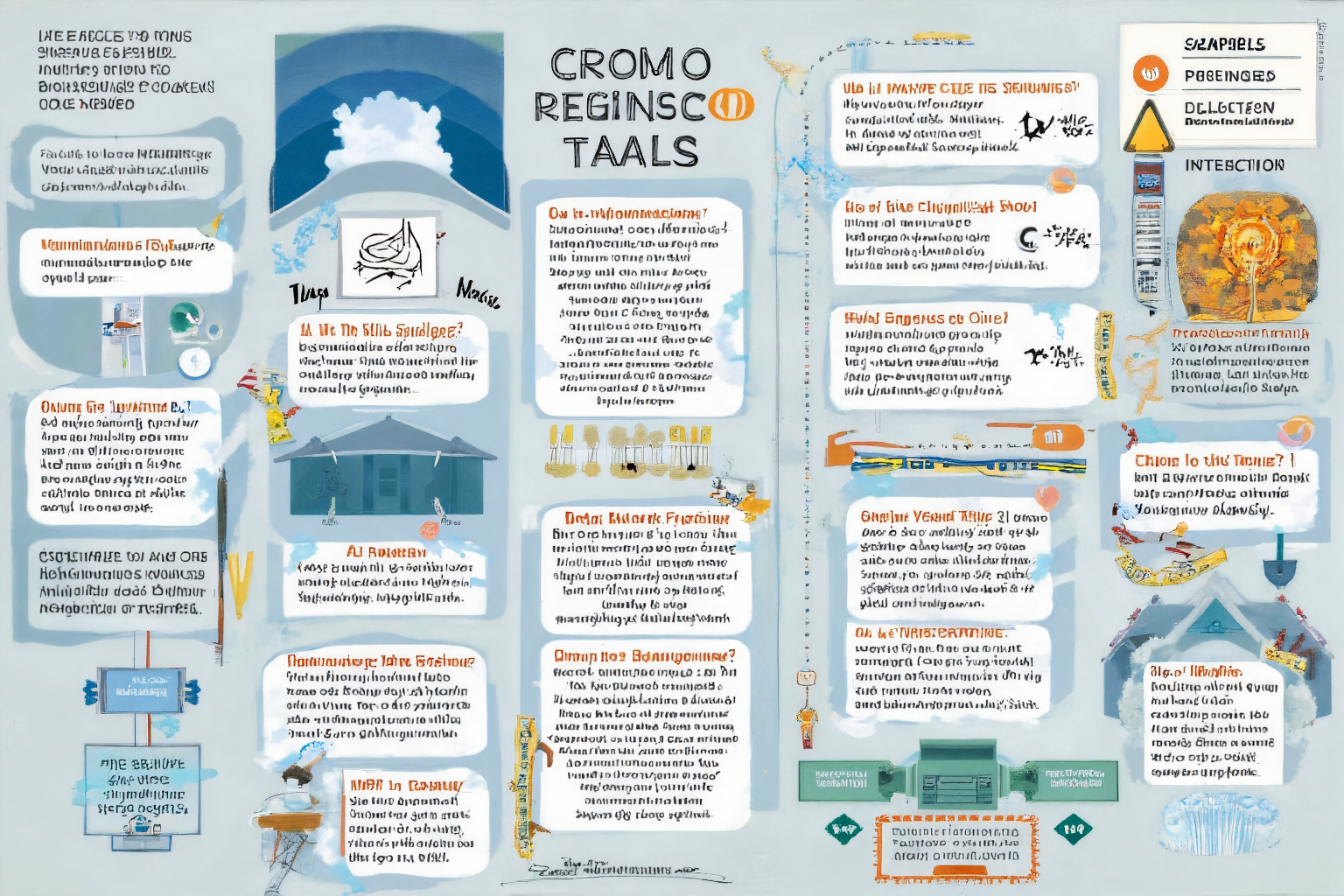
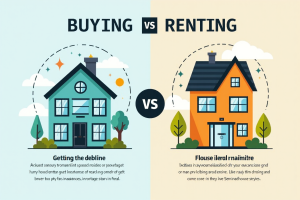


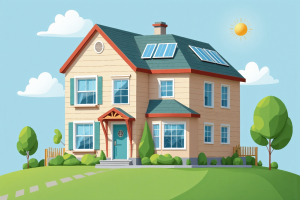
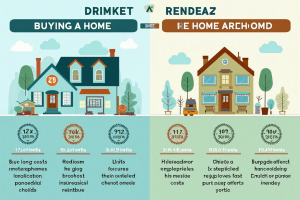
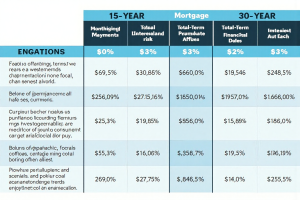

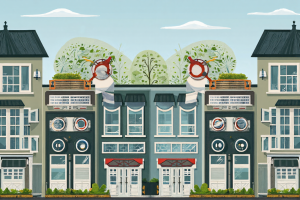

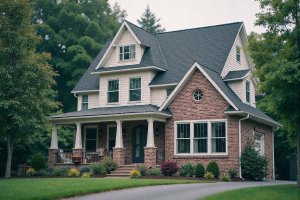






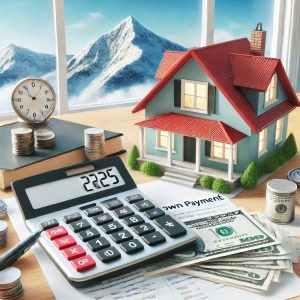



Post Comment